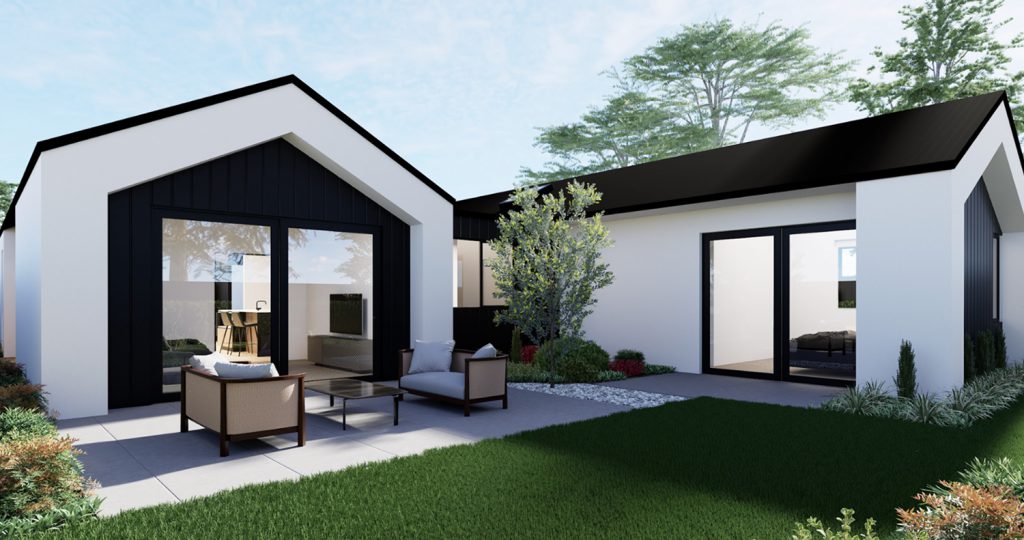We get asked every day “so what sort of foundations are we going to need for our new home?” Post the quakes in Canterbury that question is one of the most complex and therefore inherently cost variable issues with building.
What foundation your new home will be built on will largely be driven by two things;
- What the ground conditions are (which is determined by a geotech report)
- Where you are building. Ie are you on the flat or are you looking to build on a sloping or hill site?
A flat site is generally cheaper to build on compared to hill site so lets start with the options for a flat site.
If the ground is “good” (post the quakes called TC1)we refer to this as per code NZ3064:2011, then you broadly have two options.
- We scrape the loose top soil off, dig a perimeter footing and pour a steel reinforced footing and a concrete slab on which your house sits. Generally the home will sit 200-250mm out of the ground.
Or
-
We use a lightweight timber foundation structure (Piles, bearers, joists and a timber floor over) generally the home will sit a little over half a meter out of the ground.
Most new homes around NZ being built today are on a concrete slab. The timber option is marginally more expensive.
As soon as we encounter what is classified as a TC2 site, the rules change. TC2 indicates softer ground that we need to dig down deeper before we hit good ground on which to build the foundations. This will often require a considerable amount of excavation, dumping of soil and then bringing in certified fill before we pour an enhanced slab. People commonly talk about Ribraft or Waffle slabs.
These are most commonly used on a TC2 site where we need a stiffer foundation because of softer conditions encountered. A Typical 180-200 square meter home on a TC2 site might require additional investment in the foundation of $10,000 to $15,000 just depending on what the engineer prescribes.
Then there’s TC3. These sections may be rated TC 3 because they have significant liquefaction potential, or lateral spread, or it might just be its extremely soft. On these sites you’ll find we mostly;
- Dig down maybe 800mm to a meter, and create a gravel raft to minimise movement in the future and form a stable base on which to build.
- Then over the top build enhanced slab that in some cases might be made up of two slabs that can be re-levelled in the event of a future quake. (We call this a jackable slab)
Or
- We build a Gravel raft and timber foundation (piles bearers joists) with often a concrete slab holding it all together. You’ll hear the boffins talking about this as a Type 2a or 2b foundation.
These two broad options vary hugely in investment level but potentially anywhere from $50,000 more to several hundred thousand dollars more. Now you know why in choosing your site it’s really important that you engage your builder of choice to help guide you as to likely foundation issues, before you make a final commitment to buy.
Build on the hill or sloped site and all of the above might apply, but additionally we have the issue of slope to grapple with. Slope means we either
- Excavate out some of the site to create a level building platform. This most likely will require retaining walls above and below the building platform.
Or
- Build the home on some form of Pole structure leaving the general fall of the land largely untouched
Or
- Create a Concrete or block foundation ring and backfill to provide a level platform to build on.
All of these three have significant costs attached so think carefully about a hill site before buying. Ask the question “Is the gain of the view sufficient to soften the blow of the additional cost to build there?”
Confused – pick up the phone and talk to the Hallmark Homes team. We’re working on difficult sites every day. We’re here to listen, help and guide. You’ll find us on 0508442556


